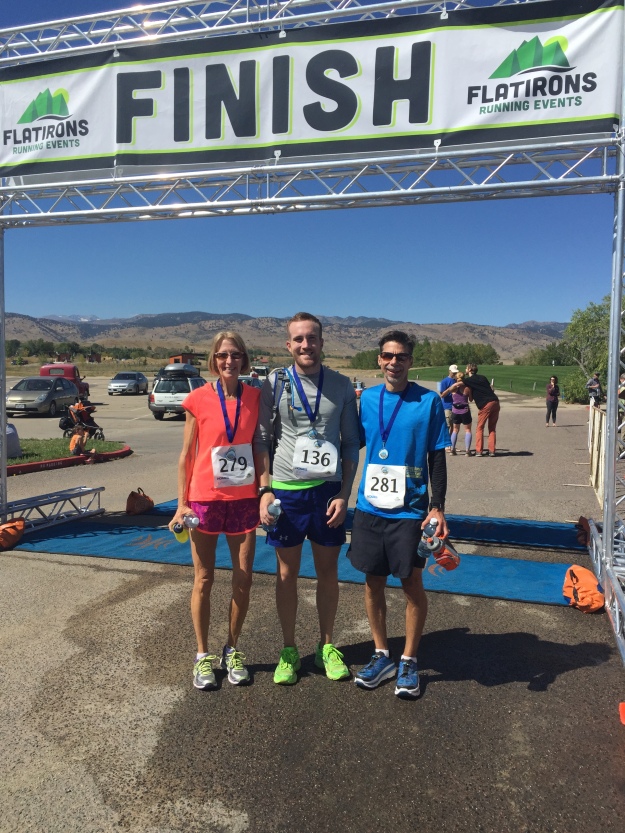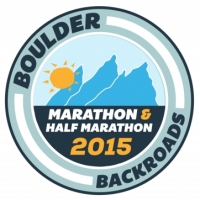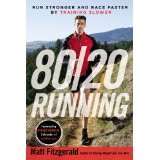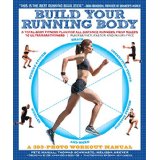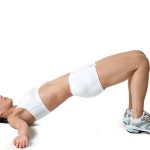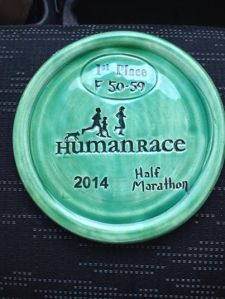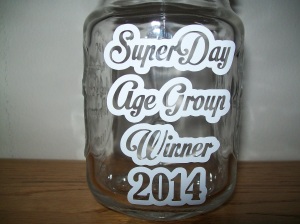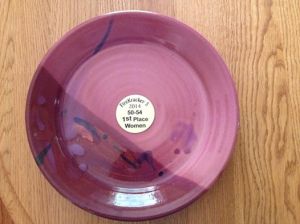
Boulder Running Company-Cherry Creek
In the heart of Denver, CO, within the upscale community of Cherry Creek, lies a runner’s paradise. It’s called Boulder Running Company Cherry Creek. Since it opened in early April, many runners have made a pilgrimage to admire the latest and greatest running store in Colorado, and to take advantage of a state-of-the-art running assessment that was previously only offered to elite runners, or non-elites who could lay down a lot of cash.

This isn’t me, but this is the magic green treadmill, and a glimpse inside the Stride Lab.
Photo Credit: BRC Facebook Page
I made my pilgrimage in May, and after admiring all the shiny new running shoes, clothes, and gear, it was my turn for a visit to the Saucony Stride Lab. A little background on the lab – the unassuming, narrow green band in the center of the lab is actually a $150,000 treadmill. There are only 11 others in the country, and this is the only one located in a retail facility and available to the general public. The other super mills are kept in research and university facilities. Why did they put this one in a running store? According to my tester guy, Saucony will use the data from all the running assessments for product research and development. They’ll make note of how many runners would benefit from certain types of shoes, and of course, what shoes the runners being tested are wearing. If not Saucony, why not?
After receiving a brief rundown of what the assessment would entail, I slipped a neon yellow belt around my hips (so the cameras could more easily gauge any hip drop), stepped on the treadmill, and he fired it up. The goal was to bring me from a walk to an easy pace, and have me run at that pace for about a minute. I was supposed to run “naturally” and not look at my reflection on the huge screen in front of me (yeah, I didn’t peek at all). While I was running there were 4 cameras filming me from various angles, and the treadmill was measuring the force of my foot strikes, whether or not I struck harder with one foot than the other, and how much side-to-side movement I generated. The belt was quite a bit more narrow than a normal treadmill, so I really had to concentrate to stay in the center. The minute passed quickly, and I really didn’t want to stop.
While my tester guy was letting his fingers fly over the computer keyboard to gather the test results, I was surprised to realize I was really nervous. What if I had something horribly wrong with my stride? What if I looked like Phoebe in the episode of Friends when she ran through Central Park with her arms and legs flailing? It calmed my fears a little to know there is a physical therapist “in residence” so if something was broken, I could consult with a professional to help me fix it. Luckily I didn’t see Phoebe while watching my film, and amazingly there wasn’t much wrong with my form.
There was a lot of data, and in addition to the foot strike/lateral movement analysis from the treadmill, the cameras assessed a variety of things; my vertical displacement (up and down movement), how my upper body moves, any hip drop, angle of my knee at impact, amount of hip extension, body rotation, degree of pronation, where my foot strikes the ground (heel, midfoot, forefoot), and where it lands in relation to my body. Then the computer analyzed angles, forces, etc.
My results – I have a very efficient, “almost perfect” stride. I’m a moderate heel striker, but I roll through quickly from heel to midfoot to toe, so he didn’t suggest changing anything there. I strike the ground evenly with both feet, not too hard or too softly – all ok there. I have very little up and down or side-to-side movement, my upper body rotation is what it should be, my arms match my stride and are placed appropriately (don’t cross the body, my hands don’t go too high, etc.). I don’t over stride, and he felt like my cadence is appropriate. No hip drop (thank you clam shells and glute bridges), my hip extension is good, my knee angles are good, my shoes keep my feet from pronating too much (he said I don’t need the Superfeet inserts I sometimes use), and my Brooks Adrenalines appear to be an excellent shoe choice for me. His only suggestion was for me to work on going from a very straight back to a slight forward lean (from the ankles), which would make me a bit more efficient.
I was so relieved at the assessment results, and really wanted to get the “almost perfect” part in writing, although he was only referring to my running form. Having an analysis like this done has been on my wish list for such a long time, and I still can’t believe it was absolutely free! If you’re anywhere near Boulder Running Company Cherry Creek, I encourage you to make an appointment in the Saucony Stride Lab. It’s well worth your time!
Have you ever had a gait assessment done? Did it help your running?

